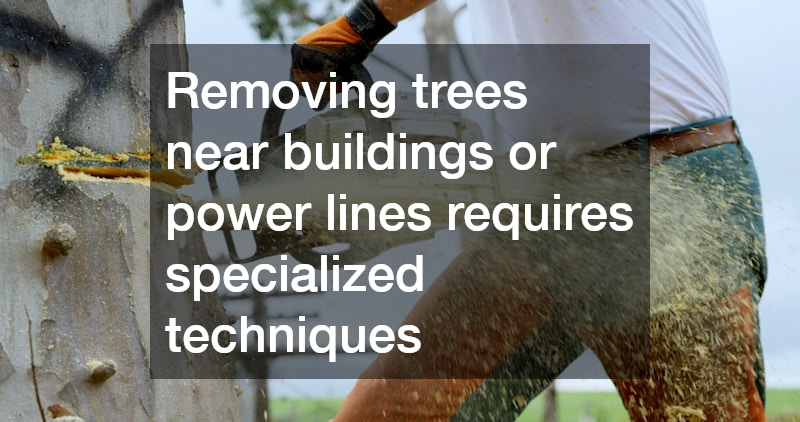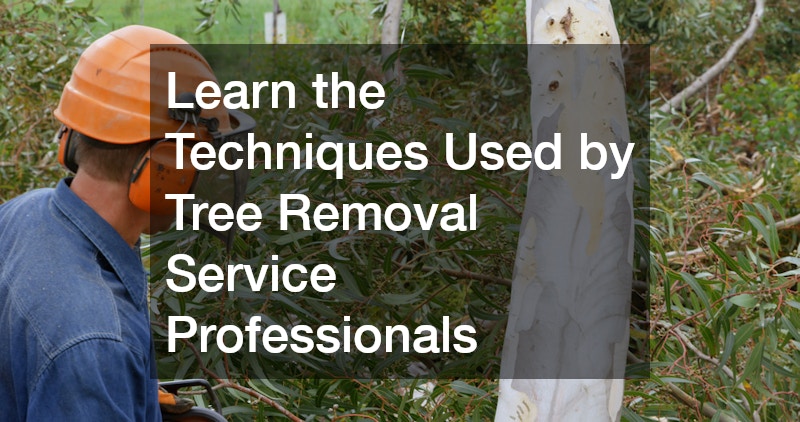There are various techniques that tree removal service professionals employ to safely and effectively remove trees. Understanding these techniques can inform property owners and help them make better decisions when hiring a service. Trees can become hazardous due to factors such as decay, disease, or adverse weather conditions.
Knowing when and how to remove a tree is essential not only for aesthetic purposes but also for safety.
Property owners often face dilemmas regarding tree management, especially when trees pose a threat to homes or infrastructure. By learning about the professional methods of tree removal, those needing such services can approach their decisions with more confidence. This article aims to demystify the tree removal process and highlight critical considerations for those contemplating tree removal.
With the right knowledge, property owners can better prepare for the logistics involved in tree removal, including costs and timelines. This understanding can also help them engage effectively with tree service professionals. Let’s dive deeper into the various techniques, safety measures, and post-removal practices involved in tree removal.
Essential Safety Measures
Safety is paramount in tree removal. Professionals adhere to strict safety protocols to protect themselves and others nearby. Personal protective equipment (PPE) such as helmets, goggles, gloves, and hearing protection plays a crucial role in safeguarding against potential injuries.
Moreover, the area surrounding the worksite is meticulously assessed and secured to prevent accidents. Professionals often establish a perimeter to keep bystanders at a safe distance while operations are ongoing. This precaution helps ensure that no harm comes to individuals who might inadvertently wander into the danger zone.
Training and experience are vital components of the safety measures employed during tree removal. Professionals undergo extensive training to handle potentially perilous situations. By utilizing advanced techniques and safety protocols, they significantly reduce the risk of accidents during the removal process.
Professional Equipment
Chainsaws are often the most recognized tools, essential for cutting through thick trunks and branches. They come in various sizes and types, allowing professionals to choose the best option for the tree at hand.
In addition to chainsaws, professionals utilize ropes and harnesses to control the fall of trees and branches. These tools enable them to execute precise cuts and direct the tree’s descent safely. The use of ropes is particularly important in challenging situations, such as trees located near buildings or power lines.
Stump grinders also play a significant role in the post-removal phase. Once a tree has been felled, stump grinders help eliminate the remaining stump, allowing for a clean area to either plant new trees or use the land for other purposes. These specialized tools expedite the process and enhance the overall efficiency of tree removal services.
Tree Assessment Techniques
Professionals often assess the health and stability of a tree before removal. This assessment is crucial as it determines whether a tree poses a risk to its surroundings. Techniques such as visual inspections help identify signs of decay, disease, or structural weaknesses that could warrant removal.
More advanced assessments may involve tools like resistographs or sonic tomography. These tools measure the internal condition of the tree, providing insights into hidden decay or structural integrity issues. By employing these techniques, professionals can make informed decisions about the necessity of removal.
The timing of the assessment is equally important. Certain seasonal factors, such as leaf drop or active growth periods, influence the visibility of tree defects. Professionals know when to conduct assessments for optimal results, ensuring that trees are evaluated under the best possible circumstances for accurate analysis.
Tree Removal Near Structures
Removing trees near buildings or power lines requires specialized techniques to avoid damage. Professionals skillfully navigate the intricacies of cutting and lowering trees in tight spaces. This involves precise planning and often necessitates the use of rigging techniques to control the tree during the removal process.
One of the primary methods employed is sectional felling, where the tree is dismantled in manageable sections before being lowered to the ground. This approach minimizes the risk of collateral damage to nearby structures, ensuring that removal operations remain controlled and focused.
Additionally, professionals maintain clear communication with utility companies when power lines are involved. Depending on the situation, they may coordinate to temporarily disconnect power or enlist linemen to assist in safely clearing the area. Such precautions underscore the importance of a thoughtful approach when dealing with the complexities introduced by proximity to infrastructure.
Post-Removal Care Techniques
After the tree is removed, experts often implement various methods for land restoration and plant health. The removal of a tree can leave the surrounding area vulnerable, warranting immediate attention for soil health and stabilization. Professionals may incorporate mulch, soil amendments, or even grass seeding to promote healthy regrowth.
Stump grinding is a common post-removal technique that not only eliminates the visual remnant of the tree but also helps prepare the land for future use. By grinding the stump into small chips, the area becomes more aesthetically pleasing and primed for landscaping or new plantings.
Finally, careful monitoring of the ecosystem following tree removal is essential. Professionals may advise on watering practices or the introduction of new plants that can coexist with existing flora. Such post-removal care ensures that the landscape remains vibrant and healthy long after the removal of the tree.
Understanding the techniques used by tree removal service professionals can greatly enhance your knowledge and awareness when it comes to managing your landscape. Whether you’re looking to remove a problematic tree or simply learn more, these insights will prove invaluable. From safety measures and equipment to post-removal care, the expertise of tree removal professionals ensures that the process is handled with care and consideration.
By recognizing the need for proper assessment and removal techniques, property owners can make informed choices that safeguard their property and the environment. Knowledge of these practices not only reduces risks but also fosters a healthier living space for all.
Understanding the intricacies of tree removal will empower property owners to enhance their landscapes responsibly. It creates the opportunity for thriving ecosystems to emerge, ensuring that the beauty of nature continues to flourish even after a tree has been removed.

